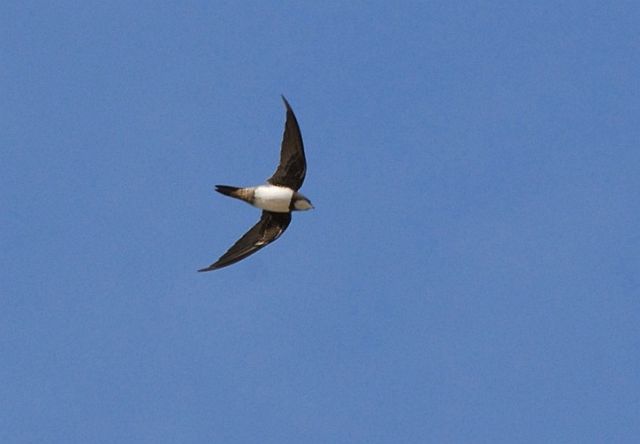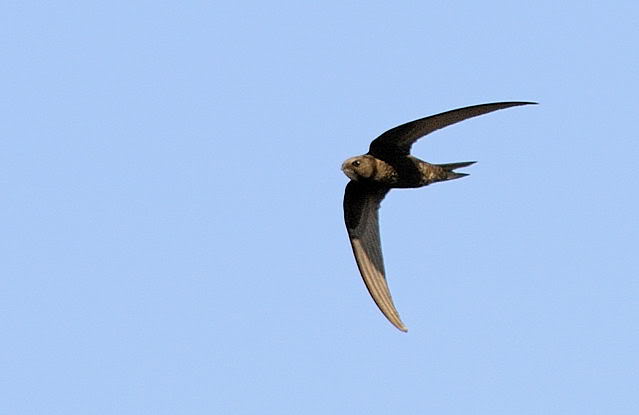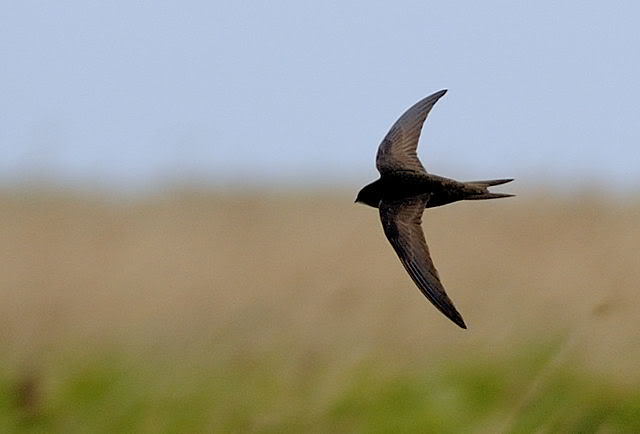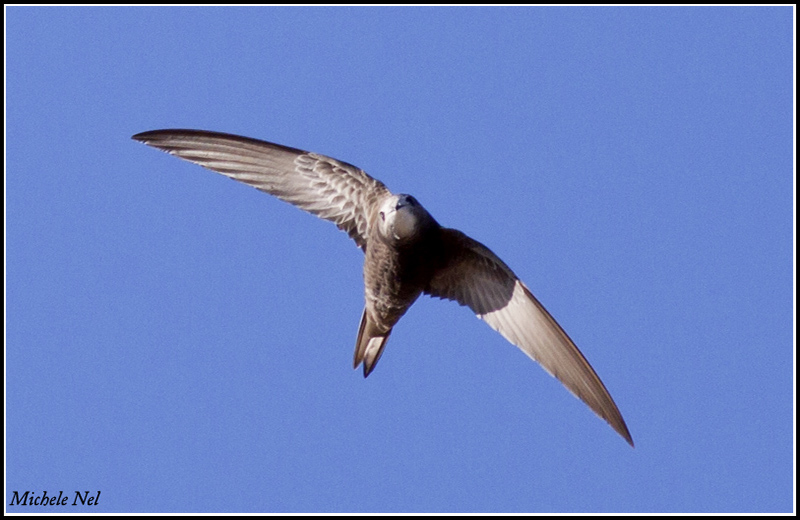ORDER APODIFORMES Family Apodidae (Swifts)
Posted: Wed Mar 12, 2014 8:58 am
Apodiformes are one of the most diverse orders of migratory birds on Earth. There are almost 450 species so far identified within three living familes: swifts, tree swifts and hummingbirds. The name Apodiformes is based on the Greek words "a pous," meaning "without foot." Apodiforms have small feet and their legs are short. Many birds in this order cannot walk, and they are unable to escape quickly by simply walking and then flying away if they land on the ground.
Although their feet are weak, apodiforms are strong fliers because they have thick shoulder bones and long, powerful breastbones. Because of their neck muscles, these birds can move their heads quickly. Long wings containing short bones allow for some spectacular flying and hovering.
In Southern Africa, there are only birds of the family Apodiae (swifts).
The swifts are a family, Apodidae, of highly aerial birds. They are superficially similar to swallows, but are not closely related to passerine species.
Swifts are the most aerial of birds. Larger species are amongst the fastest fliers in the animal kingdom. The Common Swift can cruise at a maximum speed of 31 metres per second (112 km/h). In a single year the common swift can cover at least 200,000 km.
Compared with typical birds, swiftlet wings have proportionately large wingtip bones. By changing the angle between the wingtip bones and the forelimb bones, they are able to alter the shape and area of their wings, maximizing their efficiency and maneuverability at various speeds. They are able to rotate their wings from the base, a trait that allows the wing to remain rigid and fully extended deriving power on both upstroke and downstroke. The downstrokes produces both lift and thrust, while the upstrokes produces a negative thrust (drag) that is 60% of the thrust generated during the downstrokes, but simultaneously it contributes with a lift that is also 60% of what is produced during the downstroke. This flight arrangement could also have benefits for the bird's control and maneuverability in the air.
Swifts occur on all the continents, though not in the far north or large deserts. The swifts of temperate regions are strongly migratory and winter in the tropics.
Although their feet are weak, apodiforms are strong fliers because they have thick shoulder bones and long, powerful breastbones. Because of their neck muscles, these birds can move their heads quickly. Long wings containing short bones allow for some spectacular flying and hovering.
In Southern Africa, there are only birds of the family Apodiae (swifts).
The swifts are a family, Apodidae, of highly aerial birds. They are superficially similar to swallows, but are not closely related to passerine species.
Swifts are the most aerial of birds. Larger species are amongst the fastest fliers in the animal kingdom. The Common Swift can cruise at a maximum speed of 31 metres per second (112 km/h). In a single year the common swift can cover at least 200,000 km.
Compared with typical birds, swiftlet wings have proportionately large wingtip bones. By changing the angle between the wingtip bones and the forelimb bones, they are able to alter the shape and area of their wings, maximizing their efficiency and maneuverability at various speeds. They are able to rotate their wings from the base, a trait that allows the wing to remain rigid and fully extended deriving power on both upstroke and downstroke. The downstrokes produces both lift and thrust, while the upstrokes produces a negative thrust (drag) that is 60% of the thrust generated during the downstrokes, but simultaneously it contributes with a lift that is also 60% of what is produced during the downstroke. This flight arrangement could also have benefits for the bird's control and maneuverability in the air.
Swifts occur on all the continents, though not in the far north or large deserts. The swifts of temperate regions are strongly migratory and winter in the tropics.


 © Dewi
© Dewi © BluTuna
© BluTuna



 © Michele Nel
© Michele Nel